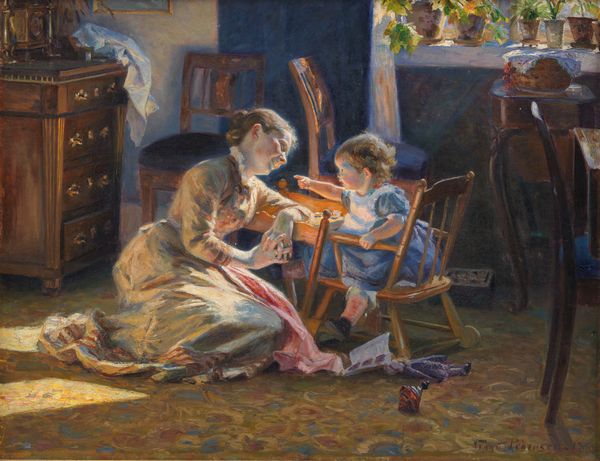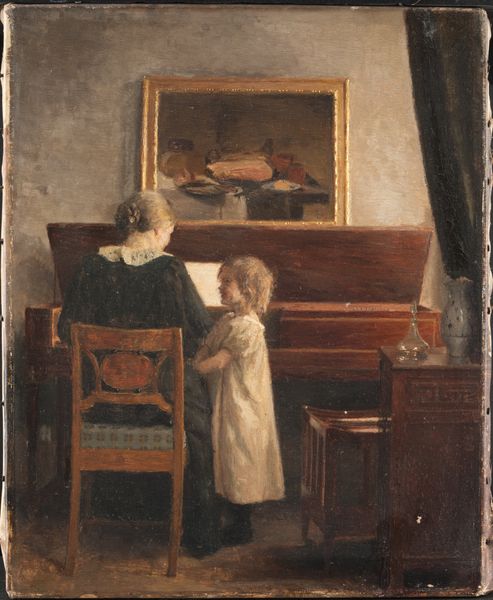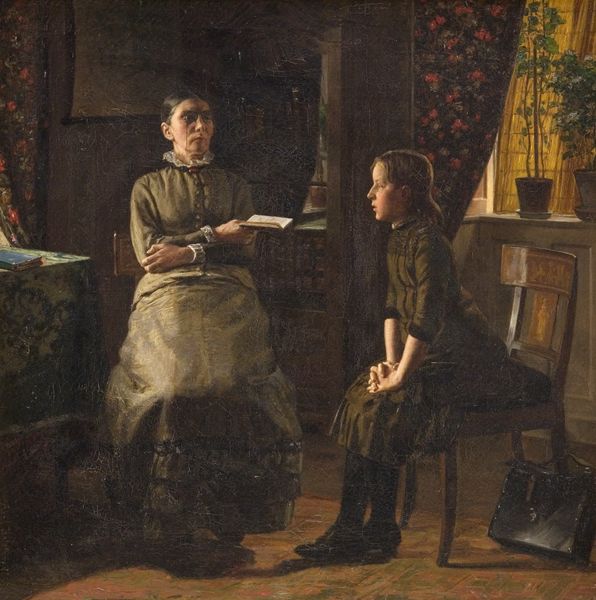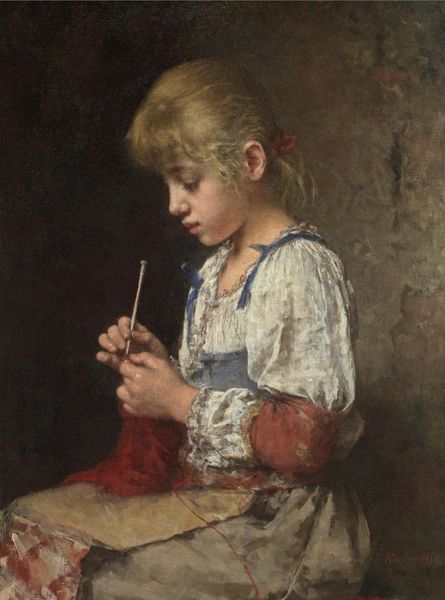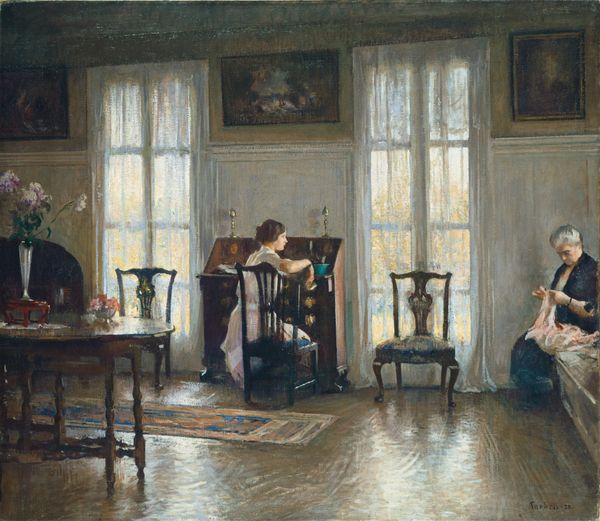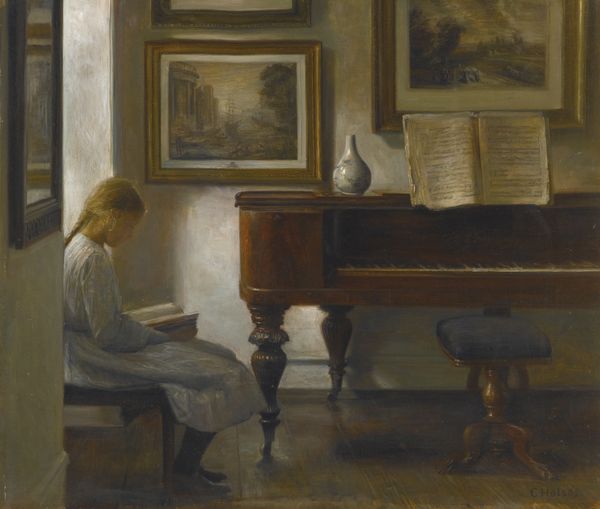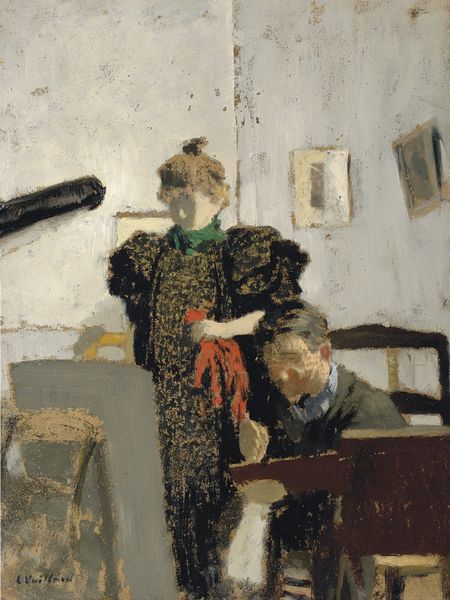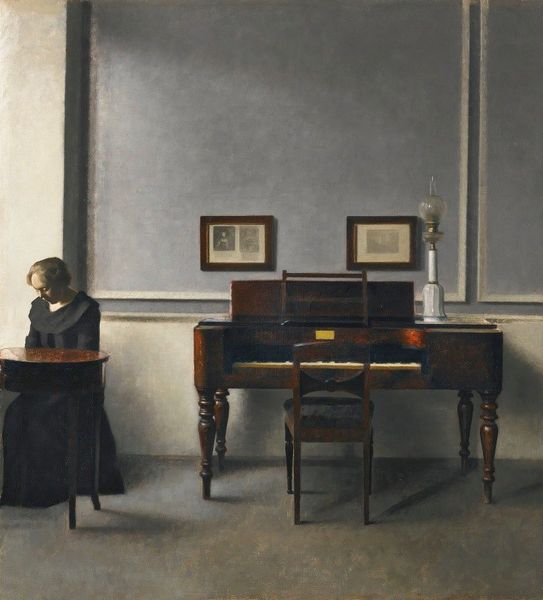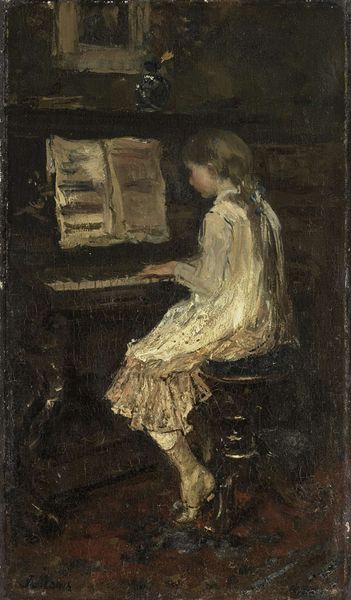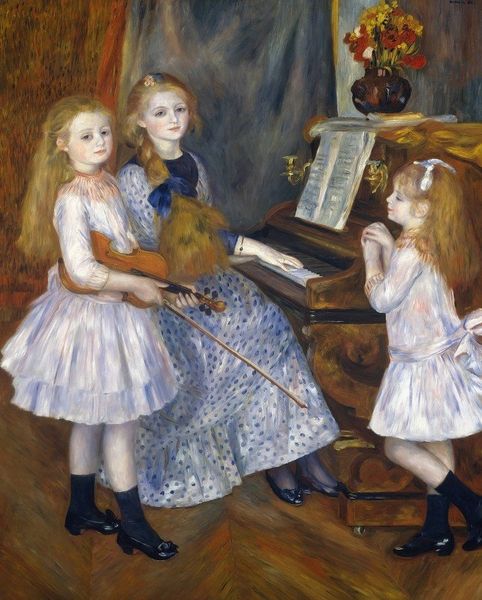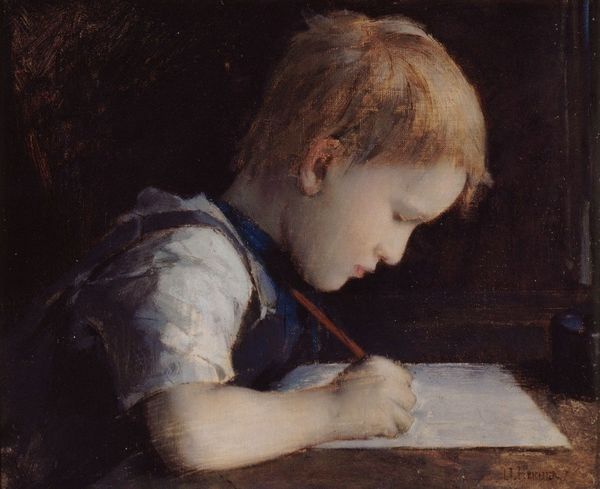
Copyright: Modern Artists: Artvee
Curator: Norman Rockwell’s “The Artist’s Daughter,” completed around 1919, offers a glimpse into the world of childhood imagination and creativity, executed with oil paint. Editor: The scene feels wonderfully innocent; the colors are soft and subdued. The composition centers on a young girl diligently painting a portrait of her doll, I'm drawn to the gentle interplay of light across the canvas. Curator: Indeed. And when we examine the social context, the portrayal of childhood as a space of playful learning aligns with the burgeoning progressive era emphasis on education and child-centered philosophies. Consider how Rockwell's image romanticizes this era. Editor: That's true. Yet it can also be interpreted within art history and theory itself. The performative aspect interests me the most—the child imitates an artist, thus staging not only a likeness, but also perhaps Rockwell, and thus the entire industry around fine arts. Curator: It is a layered self-referentiality. Also consider the positioning of the doll—posed, but not idealized. This potentially critiques prevailing notions of femininity and representation, asking us who controls the creation and reception of beauty ideals in both life and art. Editor: And, beyond that, to examine not only the painting’s moment of production but the politics surrounding its current institutional display. In what ways is it presented to visitors, and to what sociopolitical end? Who is the subject and who the object, then, as well as now? Curator: Good questions. To conclude, Rockwell provides not just a sentimental scene but a study of power dynamics embedded in acts of representation and viewing. Editor: Yes. Rockwell asks us, then and now, what conditions allow the artist's subject to exist. And the doll gives an unexpectedly sobering response.
Comments
No comments
Be the first to comment and join the conversation on the ultimate creative platform.
